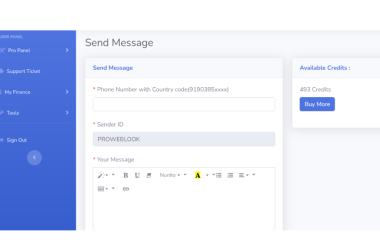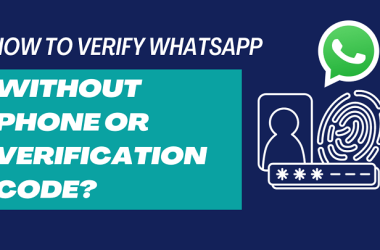Introduction.
SSL Lookup: In the digital era, where online transactions and data exchanges have become ubiquitous, ensuring the security and privacy of sensitive information is paramount. This is where Secure Socket Layer (SSL) technology plays a pivotal role. SSL, a cryptographic protocol, provides a secure channel for data transmission over the internet, safeguarding users from potential threats such as data breaches, identity theft, and unauthorized access. In this comprehensive guide, we delve into the intricacies of SSL lookup, its significance, implementation, and its impact on cybersecurity.
Chapter 1: Understanding SSL.
What is SSL?
SSL, short for Secure Socket Layer, is a cryptographic protocol that facilitates secure communication over computer networks, primarily the internet. Developed by Netscape in the mid-1990s, SSL ensures that data transmitted between a web server and a client (typically a web browser) remains encrypted and confidential. This encryption prevents malicious actors from intercepting and deciphering sensitive information exchanged between parties.
How SSL Works.
SSL operates through a process called the SSL handshake. When a user accesses a website secured with SSL, the following steps occur:
1. Initiation: The client (web browser) sends a request to the server to initiate an SSL connection.
2. Authentication: The server presents its SSL certificate to the client, verifying its identity.
3. Key Exchange: The client and server exchange cryptographic keys to establish a secure connection.
4. Encryption: Once the keys are exchanged, data transmission between the client and server occurs securely, encrypted using the shared keys.
SSL Certificates.
At the core of SSL is the SSL certificate, a digital certificate issued by a trusted Certificate Authority (CA). SSL certificates serve as electronic credentials that verify the authenticity and identity of a website. They contain essential information such as the domain name for which the certificate is issued, the public key used for encryption, the Certificate Authority that issued the certificate, and the expiration date.
Chapter 2: Significance of SSL Lookup.
Security Assurance.
SSL lookup, also known as SSL certificate lookup, is the process of verifying the validity and authenticity of SSL certificates associated with websites. This verification ensures that websites use valid SSL certificates issued by trusted CAs, reducing the risk of data breaches and unauthorized access. By performing SSL lookup, users can have confidence that the websites they visit are legitimate and secure.
Trustworthiness Verification.
In addition to security, SSL lookup helps establish trustworthiness. By verifying SSL certificates, users can trust that the website is not fraudulent or malicious, enhancing their confidence in conducting online transactions and sharing sensitive information.
Privacy Protection.
SSL lookup plays a crucial role in protecting user privacy. By encrypting data transmitted between the client and server, SSL ensures that sensitive information such as login credentials, payment details, and personal data remains confidential. This encryption prevents eavesdropping and interception by unauthorized parties, safeguarding user privacy and confidentiality.
Compliance Requirements.
Many regulatory requirements and industry standards mandate the use of SSL certificates to secure online transactions and protect user data. SSL lookup ensures compliance with these standards by verifying that websites use valid SSL certificates issued by trusted CAs. By complying with regulatory requirements, organizations demonstrate their commitment to cybersecurity and data protection.
Chapter 3: Conducting an SSL Lookup.
Browser Indicators.
Most modern web browsers display indicators such as a padlock icon or the word “Secure” in the address bar to indicate that a website is secured with SSL. Users can click on these indicators to view detailed information about the SSL certificate, including its issuer, expiration date, and cryptographic details. Browser indicators provide a convenient way for users to verify the validity of SSL certificates.
Online Tools.
Numerous online tools and services allow users to perform SSL certificate lookups by entering the domain name of the website. These tools provide detailed information about the SSL certificate, including its issuer, expiration date, and cryptographic details. Online SSL lookup tools are convenient for users who want to quickly verify the validity of SSL certificates without using command-line tools.
Command Line Tools.
Advanced users can use command-line tools such as OpenSSL to perform SSL certificate lookups directly from the terminal or command prompt. OpenSSL offers greater flexibility and control over the SSL lookup process, allowing users to customize their queries and perform advanced analyses of SSL certificates. Command-line tools are preferred by security professionals and system administrators who require fine-grained control over SSL lookup processes.
Chapter 4: Challenges and Considerations.
Certificate Revocation.
SSL certificates can be revoked if they are compromised or no longer valid. It’s essential to check for certificate revocation status during the SSL lookup process to ensure that the certificate has not been revoked. Certificate revocation checking helps prevent the use of invalid or compromised SSL certificates, reducing the risk of security incidents.
Certificate Chain Verification.
SSL certificates often form a chain of trust, where intermediate certificates are used to verify the authenticity of the server’s SSL certificate. SSL lookup should include verification of the entire certificate chain to ensure its integrity. Certificate chain verification helps detect and prevent the use of fraudulent SSL certificates issued by unauthorized parties.
Certificate Transparency Check.
This is a mechanism designed to detect fraudulent SSL certificates by publicly logging all issued certificates. Incorporating Certificate Transparency data into the SSL lookup process can enhance its effectiveness by allowing users to verify the authenticity of SSL certificates against publicly available logs. Certificate Transparency helps increase transparency and accountability in the SSL ecosystem, reducing the risk of fraudulent certificate issuance.
Expired Certificates.
Expired SSL certificates pose a security risk as they can no longer provide secure communication. It’s crucial to monitor SSL certificate expiration dates and renew certificates promptly to avoid disruptions in service. Proactive management of SSL certificates helps ensure continuous availability of secure communication channels and reduces the risk of security incidents due to expired certificates.
Conclusion.
SSL lookup plays a critical role in ensuring the security, trustworthiness, and privacy of online communication. Businesses and website owners must prioritize SSL certificate management and regularly perform SSL lookups to mitigate security risks and maintain compliance with industry standards.
Visit Proweblook for more Web API tools. More resources can be found on our Github page, Social Channels are Twitter, Facebook & Youtube.








